Making your own Thai yellow curry paste is always ten times better than using store-bought. It lasts in your fridge, and you can add it to many one-pot dishes apart from curries and stews, ensuring you have a flavorful meal.
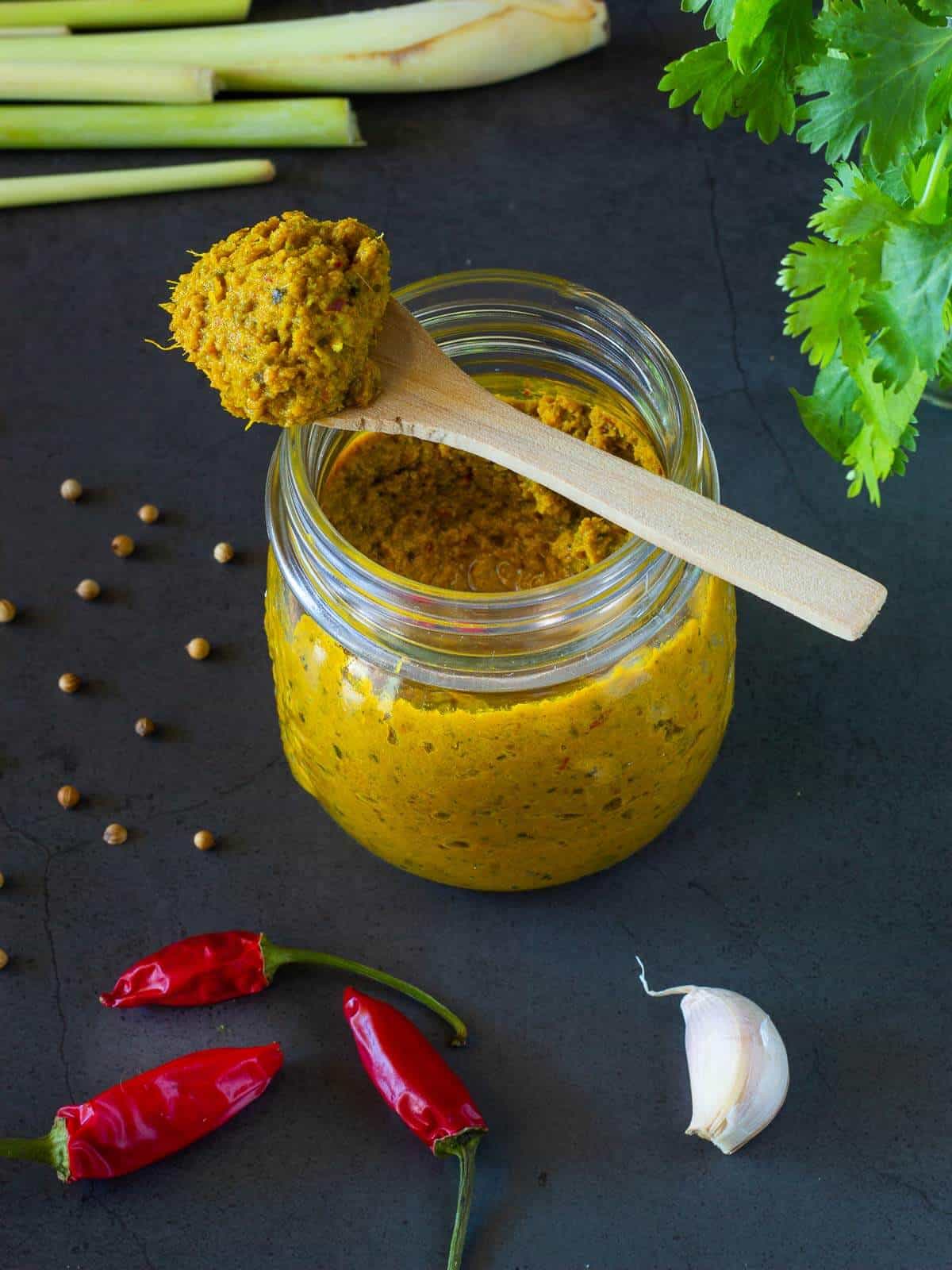
If you have ever tried making a curry at home and are like I was a couple of years ago, you most likely have been using store-bought paste. Making it from scratch is the next f-level!
We love making our sauces and preparations from scratch, as they deliver way more flavor, and you can keep them for months in the fridge.
Jump to:
💚 Why you will love it
- Makes flavorful meals
- Versatile use
- Fresh ingredients
- Homemade quality
- Health benefits
🧾 Ingredients
Various ingredients are needed for this recipe, but they are easily found in ethnic shops. Some of them are dry, and some are fresh.
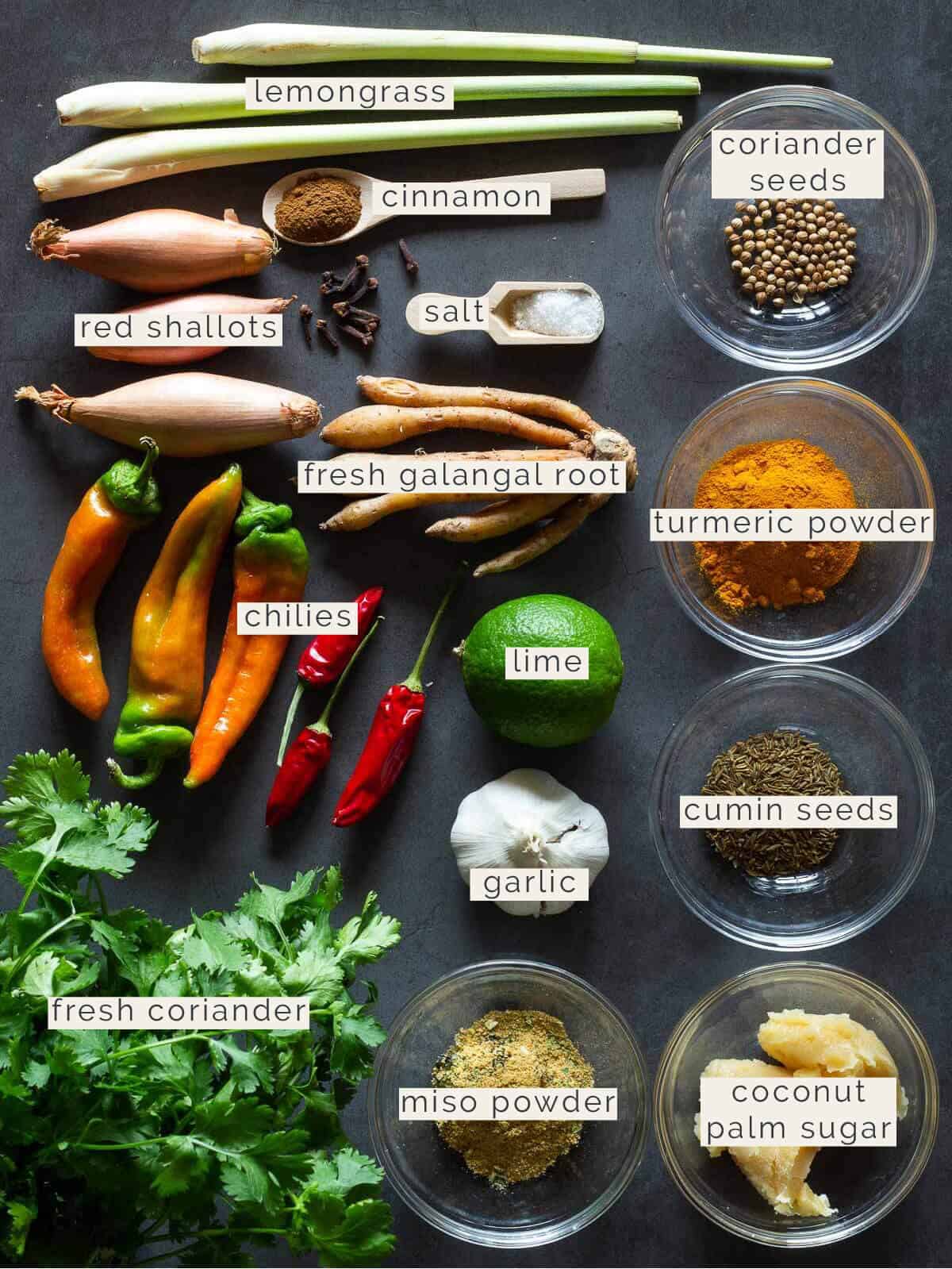
- Fresh Galangal root (Thai ginger/alternatively regular ginger): Galangal root contributes a distinct, slightly citrusy, peppery flavor essential for authentic Thai cuisine. It also helps in digestion and adds a warming sensation to the dish.
- Lemongrass: Lemongrass imparts a tangy, fresh, and lemony flavor, a key taste component in many Southeast Asian dishes. It is also known for its refreshing aroma that can enhance the overall dining experience.
- Red shallots: Red shallots have a slight sweetness and sharpness that is milder than regular onions, enriching the dish's flavor profile and adding texture and color.
- Garlic: Garlic is used for its strong and pungent flavor that becomes mellow and sweeter when cooked. It's also a common base for many dishes because it combines well with other ingredients and enhances their flavors.
- Fresh Coriander: Coriander provides a fresh and slightly citrusy flavor that balances out the heat from the spices. The herb also garners and enhances the dish's visual appeal.
- Chilies: Chilies add heat and depth of flavor to the dish, making it more savory and exciting. The spice level can be adjusted according to preference, thus catering to different palates.
- Lime: Lime is used for its tangy and sour flavor, which helps cut through the richness of other ingredients, making the dish feel more balanced and refreshing. Lime zest can also contribute to an aromatic component.
- Coconut palm sugar: Coconut palm sugar lends a mild caramel sweetness to the dish, balancing the spicy and tangy flavors. Its unrefined natural nature also imparts some minerals and nutrients.
- Miso paste (or powder): Miso paste enhances the dish's overall taste by adding umami, a savory flavor that brings depth and complexity. Its fermentative nature also contributes to better digestion.
- Cumin seeds: Cumin seeds contribute a warm and earthy flavor, enhancing the savory notes in the dish. They also provide a slight crunch when used whole, adding texture to the dish.
- Coriander seeds: Coriander seeds impart a warm, nutty, and spicy flavor with a hint of citrus, complementing the other spices in the dish. They also aid in digestion.
- Fresh Turmeric or Turmeric powder: Turmeric powder adds a vibrant yellow color to the dish, enhancing its visual appeal. Its mildly bitter and earthy flavor blends well with other spices and has well-known health benefits such as anti-inflammatory properties.
- Cloves: Cloves bring a sweet yet spicy flavor, providing warmth to the dish. They also have an aromatic quality that complements the other ingredients.
- Cinnamon: Cinnamon adds a sweet, warm, and slightly spicy flavor that complements the savory ingredients. It's also used for its inviting aroma that enhances the overall sensory experience of the dish.
The Galangal root, also called Thai Ginger, is probably the most difficult to find. I thought getting it was hard until I asked for it in Chinatown.
If you can't find Galangal, go for ginger root; don't let that stop you!
🔪 Instructions
Most of the effort is spent buying the ingredients at the supermarket, Amazon, or ethnic store, and the rest is done in only two steps.
- Start grinding the dry spices in a coffee grinder or immersion blender. You can also use a mortar and pestle.
- Secondly and lastly, add the rest of the ingredients and blend until you have a thick but smooth paste.
Hint: If you are using a jug blender, you may need to help add some liquid. If you use the curry paste immediately, you can add some coconut milk to this recipe.
👨🏻🍳 How to use
You should be super proud now that you have made your Homemade Curry! You are ready to use it in a magnificent dish!
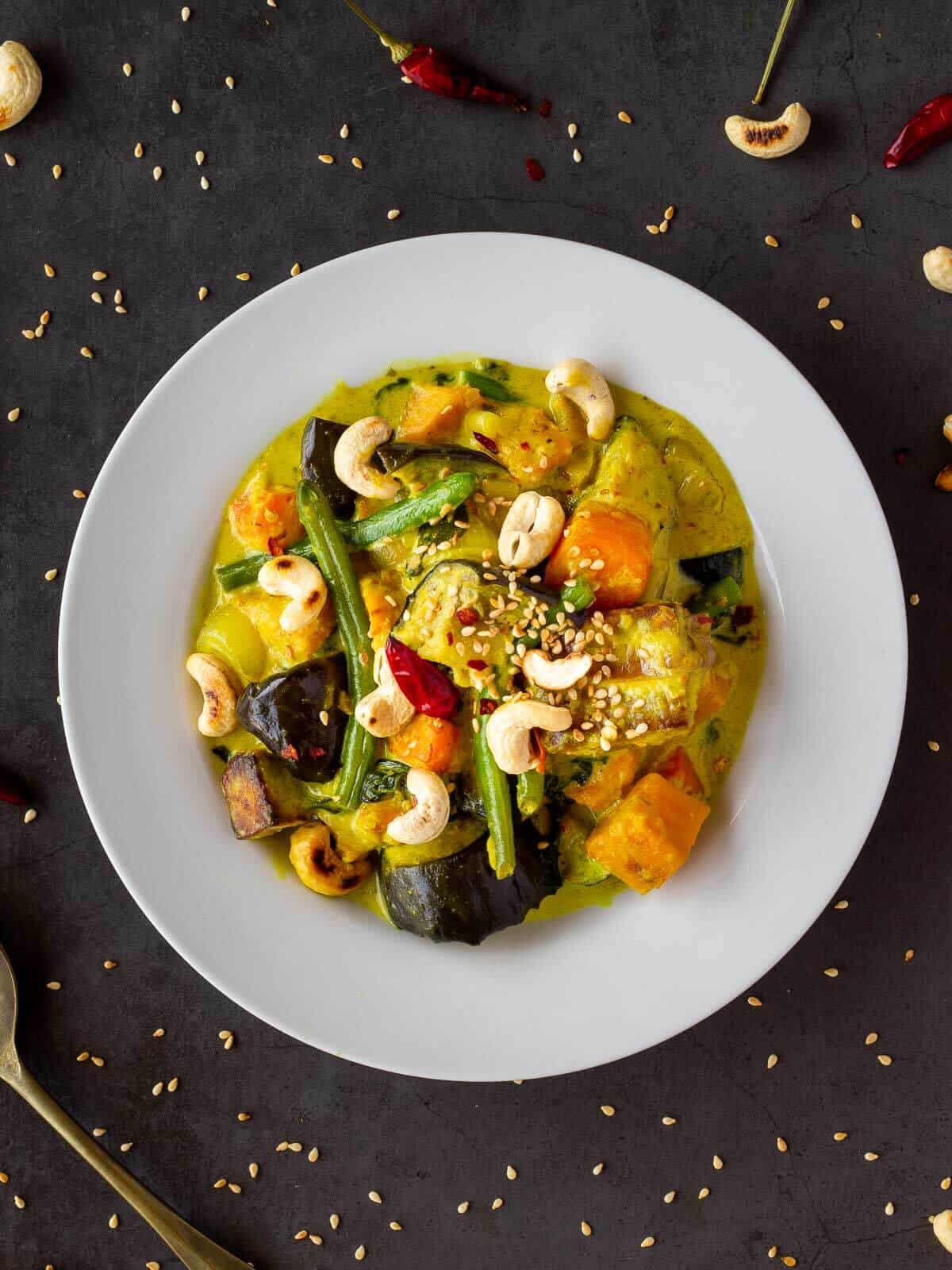
The perfect Vegetarian Thai Yellow Curry, and of course, don't forget to pair it with aromatic Jasmine Rice. If you like to add some extra textures and protein, I recommend using my Crispy Tofu Recipe, to make a high-protein vegan meal.
We also use it on our red lentil curry (often called dhal) and our spicy cauliflower soup.
❓ FAQ
The heat level of this paste largely depends on the amount and type of chilies used. As provided, the recipe calls for a moderate level of spiciness, which might be considered medium by general standards. However, the heat can be adjusted according to personal preference.
3-5 chili peppers = Very mild; a gentle tickle of spice
10 chili peppers = Medium; a lively salsa dance on the tongue
15 chili peppers = Medium hot; a cheeky flamenco with the taste buds
20 chili peppers = Hot; a fiery tango in the mouth
25 chili peppers = Super hot, a full-on; five-alarm spice festival!
If you can't find coconut palm sugar or simply prefer to use something else, here are some suitable alternatives:
Brown Sugar: It has a similar color and slightly molasses flavor that can closely mimic the caramel-like taste of coconut palm sugar.
Maple Syrup is a natural sweetener that can provide a unique flavor to the dish. However, like honey, it is a liquid and could affect the dish's consistency.
Date Sugar: Made from dried dates, this sugar has a rich, slightly fruity flavor that can work well as an alternative. You can also use date paste.
Agave Nectar: A liquid sweetener that's sweeter than sugar, so use less than the recipe calls for.
Remember, when substituting, you might need to adjust the quantity to achieve your desired sweetness level, and your dish's consistency and flavor might slightly change.
🫙 Storage
If you want to make a big batch, it freezes well. Using a food processor will save you plenty of time.
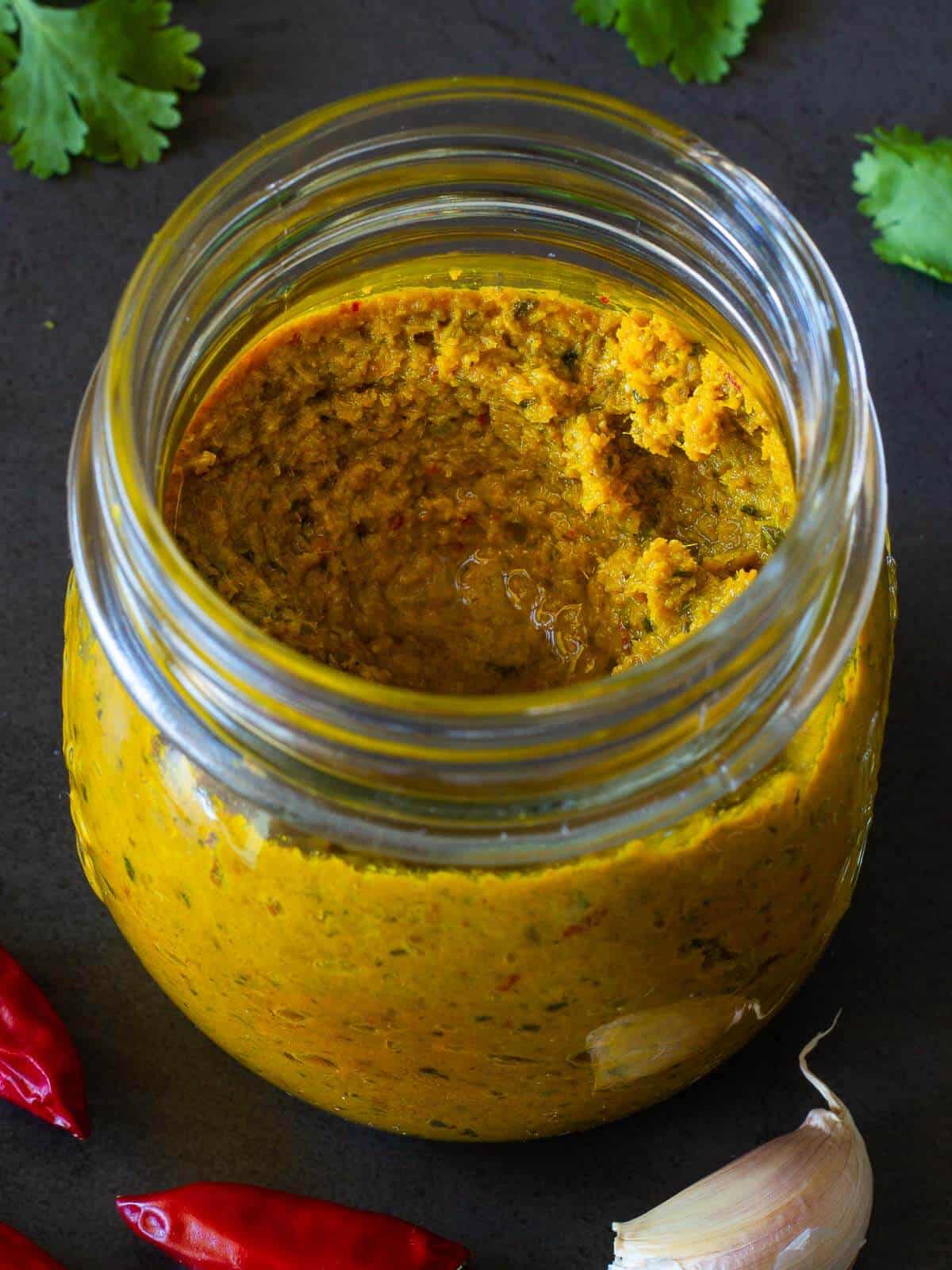
📚 More curry recipes
If you love curries, as we do, don't forget to try our Indian curries, including an Indian eggplant curry and a flavorful and light Indian cauliflower curry, both made using curry masala.
Also, check out both our Eggplant Green Thai Curry and the Massaman curry.
⭐ If you try this recipe, let us know! 💬 Leave a comment, rate it, and don't forget to tag us @ourplantbasedworld on Instagram. Cheers!
🎥 Video
📋 Recipe
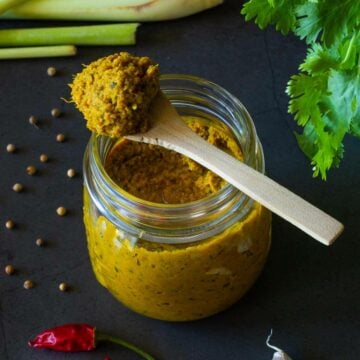
Easy Authentic Thai Yellow Curry Paste
Equipment
Ingredients
- 2 Tablespoons galangal cleaned and sliced, or ginger root
- 2 Tablespoons lemon grass bottom 4 inches (10 cm), sliced
- 2 Tablespoons shallots red, Thinly sliced
- 3 Tablespoons garlic Thinly sliced
- 1 Tablespoon coriander stem, cleaned well, cut into small pieces
- 3 Thai chilies long, or use yellow or orange chilies
- 1 lime zest and juice
- ¼ teaspoon Thai hot chili dried, ground
- 2 teaspoons coconut sugar
- 2 teaspoons miso paste or powder
- 1 tablespoon cumin seeds, ground
- 1 teaspoon coriander seeds, ground
- 1 teaspoon turmeric ground
- ½ teaspoon cloves ground
- ½ teaspoon cinnamon ground
- 1-3 tablespoons water
Optional:
Directions
- Grind the dry spices separately in a coffee grinder, immersion blender, or mortar and pestle to ensure they are fine. Include miso if using powder; if using miso paste, mix during the next step.
- Then add the rest of the ingredients and blend until you have a thick and smooth paste.
- If using a jug blender, you will need to add a little liquid to get it to blend, so if you're making green curry, if you are using the curry paste right away, you can add some of the coconut milk from the recipe.
Video
Notes
Nutrition Facts
Nutritional Disclaimer
The information shown is an estimate provided by an online nutrition calculator. It should not be considered a substitute for a professional nutritionist's advice. See our full Nutritional Disclosure here.
Affiliate Disclaimer
Please note that some of the links here are affiliate links, and I will earn a commission if you purchase through those links. I recommend all of the products listed because they are companies I have found helpful and trustworthy.
As the lead content writer and recipe developer at Our Plant-Based World, he combines his passion for health and sustainability with a Plant-Based Nutrition Certification to create accessible, delicious vegan recipes. His expertise in plant-based cooking supports the blog's mission of fostering a healthier, environmentally conscious lifestyle through simple and seasonal dishes. His commitment to making vegan cooking enjoyable and inclusive for everyone shines in each recipe and article.

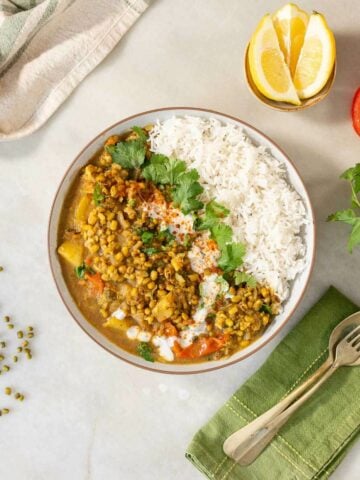
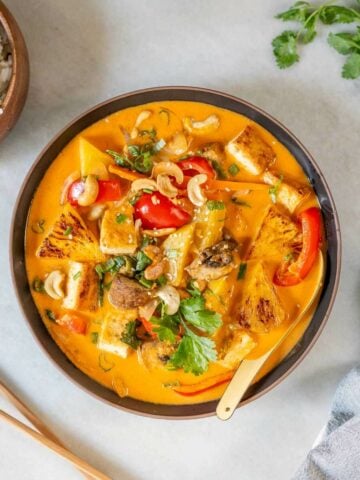
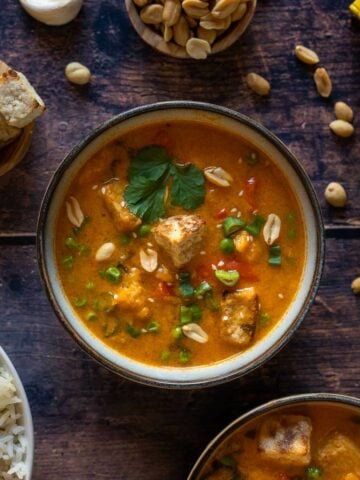
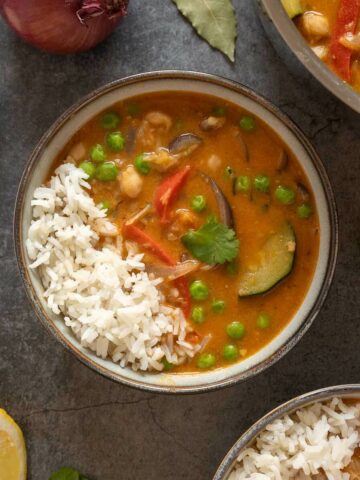
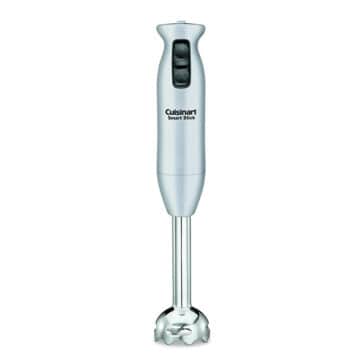
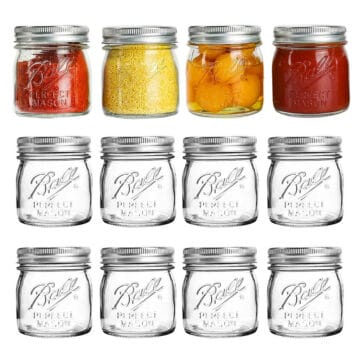

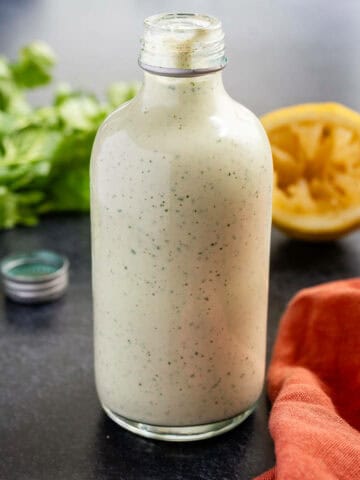
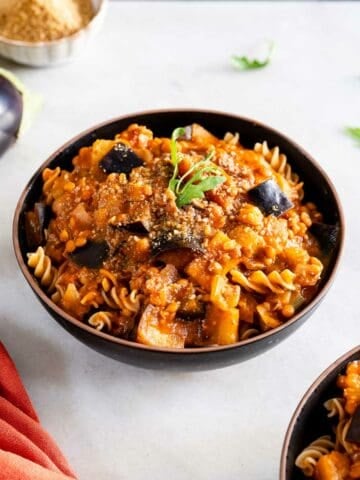
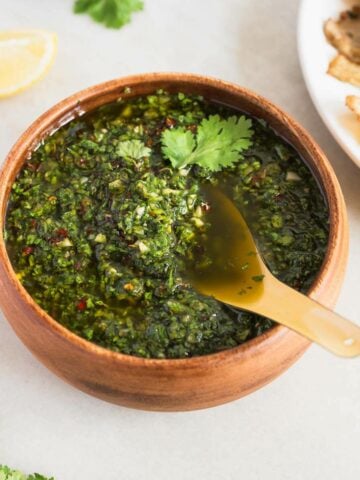
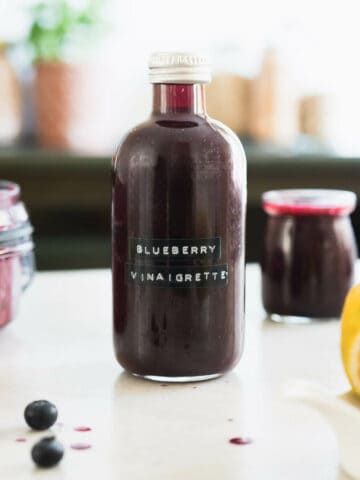
Wanda
Oh my gosh thank you for this recipe. Always hard to find the yellow curry in the stores so I'm totally making it now!
Gus
Hi Wanda, we are glad you found the recipe helpful!
Tara
Such a wonderful recipe to make at home! I love all those spices. The flavor sounds absolutely fantastic.
Tawnie Kroll
We make this curry paste all the time it's our favorite!! Thank you!!
Gus
It is also a favorite in the house! I am glad you guys are using it as much as we do!
Heather Perine
Wow I've never though to make my own curry paste - but this looks too delicious to not try! Bet the kitchen smells wonderful after whipping up a batch of this 🙂
Gus
It is a true favorite in our house. We eat curries a couple of times per week, so homemade curry paste is the game changer!
veenaazmanov
Thanks for such a lovely and flavorful recipe. Homemade Curry Paste is definitely the best.
Gus
you are welcome Veena! Totally agree with you on that! We are glad that you enjoyed it!